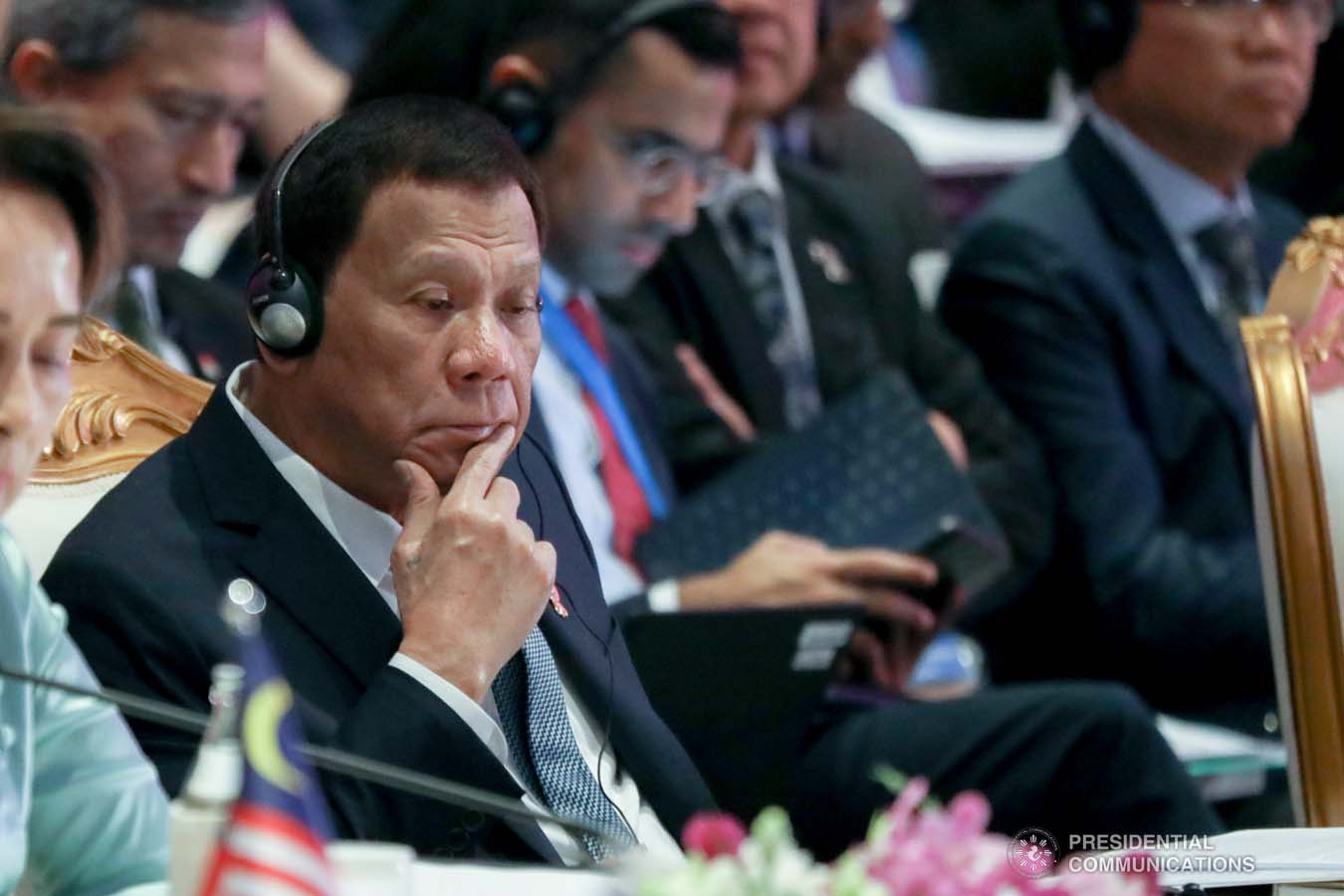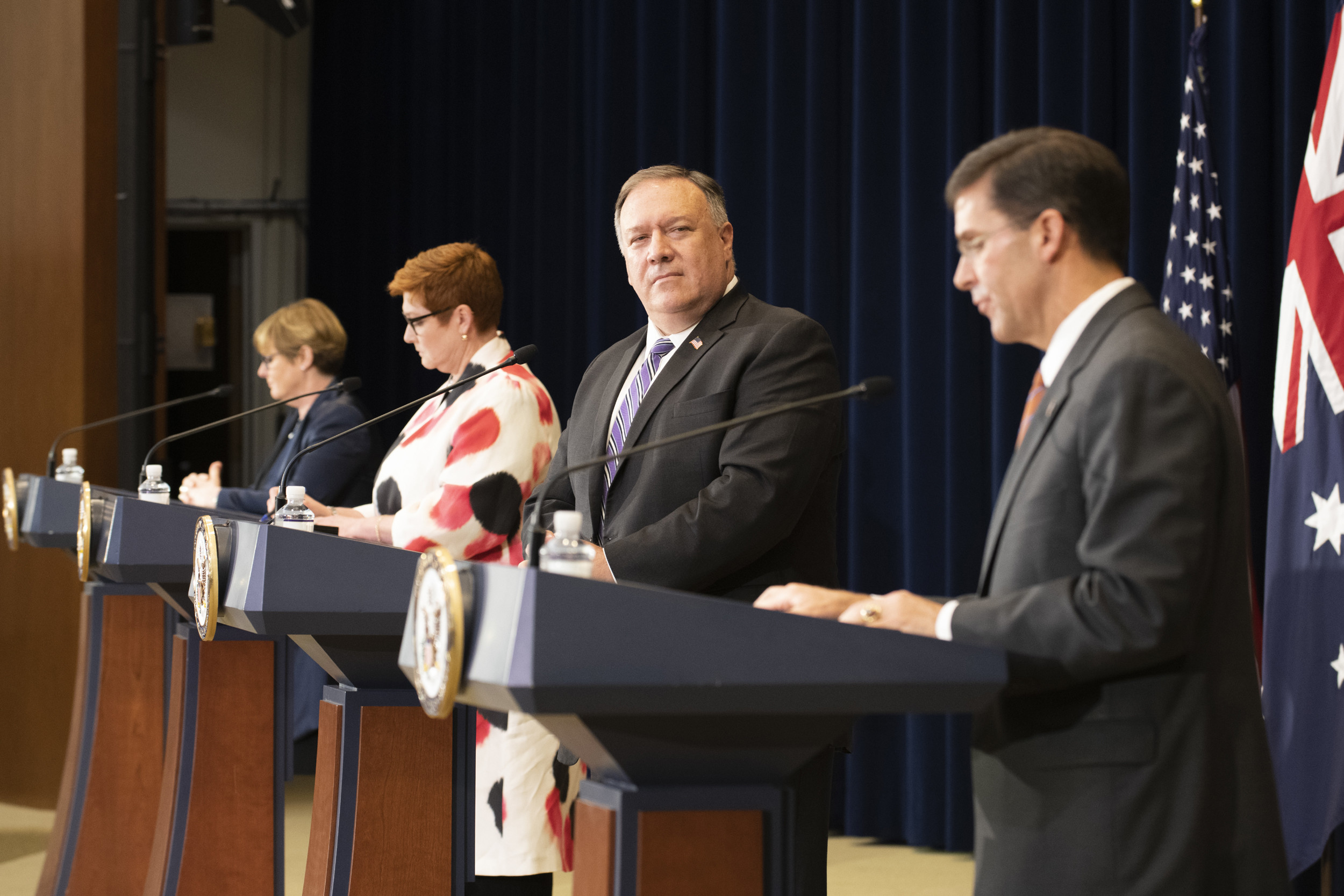As the trade war, as well as an increasingly heated war of words, escalates between China and the United States, experts are warning that the controversy and disputes related to the South China Sea risks becoming a tipping point that could lead to a military clash between the two countries.
The South China Sea is one of the world's busiest waters, a crucial trade hub connecting Asia with Europe and Africa that sees an estimated US$3.37 trillion in international trade pass through the area. The region also contains between 11 billion and 22 billion barrels of oil, up to 290 trillion cubic feet of natural gas, while also accounting for 10% of the world's fisheries.
Beijing's claim to the area is based on a demarcation known as the "nine-dash-line", which was drawn in 1947. Other competing claims include Taiwan, Japan, Indonesia, Malaysia, Vietnam and the Philippines. The United States has regularly spoken in favour of the claims held by other countries.
In 2016, an international tribunal at The Hague overwhelmingly backed the Philippines in a case related to claims on the South China Sea, ruling that China has no "historical rights" to the area. Beijing immediately rejected the decision, and since then has ignored it entirely, continuing to fortify rocks into islands, which have been used as bases for their military as well as for fishing operations.
Mixed response from the Philippines
Their actions appear to be aided by Philippines President Rodrigo Duterte, who has been accused of pandering to China and not enforcing the ruling. His administration has allowed Chinese fishermen into the Philippines' exclusive economic zone (EEZ), which critics say has "permanently damaged" the ruling, and instead strengthened China's claim.
 President Rodrigo Roa Duterte during the 22nd ASEAN Plus Three Summit at the Impact Exhibition and Convention Center in Nonthaburi, Thailand on November 4, 2019.
President Rodrigo Roa Duterte during the 22nd ASEAN Plus Three Summit at the Impact Exhibition and Convention Center in Nonthaburi, Thailand on November 4, 2019.
In mid-2019, the Philippines Supreme Court issued an order directing the government to “protect, preserve, rehabilitate and to restore” the environment in three areas the Philippines claims in the South China Sea, namely Scarborough Shoal, Second Thomas Shoal and Mischief Reef. The order follows a petition filed by environmental activists and fishermen who accused their government of failing to act against Chinese activities in the area.
As part of plans to strengthen the country’s claim on the area, Philippines’ Supreme Court Senior Associate Justice Antonio Carpio believes the country must utilise the power of communication, and has developed an information campaign dubbed the South China Sea Truth Movement, which aims to use “freedom of expression to explain the historical truth”. The campaign also plans to invite people from other countries with competing claims, including Vietnam, Malaysia, Indonesia and Brunei, to strengthen its appeal.
The campaign plans to capitalise on the “Great Firewall of China”, which prevents Chinese citizens from accessing information that the government blocks. The goal, according to Justice Carpio, is for Filipinos — and those from other nations — to engage with Chinese tourists outside their home country in the hope that they will “spread the truth about the South China Sea to their compatriots at home”.
However, there are those who have disputed such an approach, including questioning what the correct narrative about the South China Sea should be in the first place.
In addition, Drew Thompson, Visiting Senior Research Fellow at the Lee Kuan Yew School of Public Policy, argues that civil society activities will have little to no impact on a country’s delimitation activities, which are instead settled almost exclusively on a state-by-state basis.
A Proposed Code of Conduct
As the controversy shows little sign of abating, the 10-member Association of Southeast Asian Nations (ASEAN) is discussing a Code of Conduct to create a framework and evaluate the various claims that are made to the area. Although plans have been discussed to complete the accord by 2021, media reports have suggested that a series of “tough negotiations” lie ahead, with an agreement expected to take many years before it is completed.
China has pursued the ASEAN Code of Conduct as a means of managing the South China Sea territorial disputes without the intervention of other countries, notably the United States. The U.S., in particular, has taken on an increasingly strident stance on the conflict in recent weeks amid heightening tensions between the two countries.
US Involvement
In mid-July, US Secretary of State Mike Pompeo issued a statement saying Beijing’s claims in the South China Sea are “completely unlawful” and accused the Chinese government of a “campaign of bullying to control them”.
“The world will not allow Beijing to treat the South China Sea as its maritime empire,” he said.
The comments came amid heightening tensions between the two countries, which have evolved from a trade war to regular barbs about issues including COVID-19, human rights issues and China’s actions in Hong Kong. Australia, which was previously neutral on the South China Sea issue, has come to Washington’s side, and taken a harder line towards China recently, saying it “rejects any claims made by China” that are not based on international maritime law.
 US Secretary of State Michael R. Pompeo and Defence Secretary Dr. Mark. T. Esper hold a joint press availability with Australian Foreign Minister Marise Payne and Australian Defence Minister Linda Reynolds at the Department of State in Washington, July 28, 2020. (Courtesy photo)
US Secretary of State Michael R. Pompeo and Defence Secretary Dr. Mark. T. Esper hold a joint press availability with Australian Foreign Minister Marise Payne and Australian Defence Minister Linda Reynolds at the Department of State in Washington, July 28, 2020. (Courtesy photo)
China has responded with its own show of force, by conducting live-fire drills in the South China Sea, warning civilian vessels not to enter the area.
“China’s People’s Liberation Army is again quite active in the midst of this coronavirus, and it shows no sign of slowing down its operations,” said Thompson. “China has flexed its military muscles on its periphery throughout the pandemic,” he said, adding that Beijing had flown fighters in the area, as well as close to Taiwan.
“Maritime missions in the South China Sea have included deploying an aircraft carrier, a survey ship now operating in Malaysia’s exclusive economic zone, and coast guard vessels ramming and sinking a Vietnamese fishing boat.”
As Vietnam reportedly considers similar action to the Philippines, by taking its case to an international tribunal, tensions in Southeast Asia could escalate quickly, which the United States may see as an opportunity to further enhance its influence in the region.
Both the United States and China should use all diplomatic powers at their disposal to de-escalate tensions and disputes in the South China Sea, and avoid a military intervention that would have devastating impacts not only in Southeast Asia, but globally.
Photo credit: U.S. Navy Mass Communication Specialist 3rd Class Matt Brown